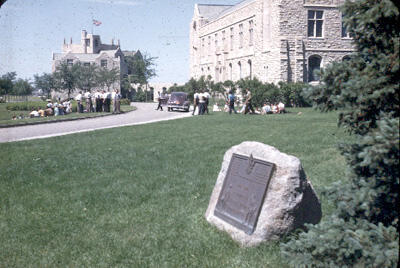
Área de título y declaración de responsabilidad
Título apropiado
Campus - Scenic
Tipo general de material
- Graphic material
Título paralelo
Otra información de título
Título declaración de responsabilidad
Título notas
Nivel de descripción
Item
Institución archivística
Código de referencia
Área de edición
Declaración de edición
Declaración de responsabilidad de edición
Área de detalles específicos de la clase de material
Mención de la escala (cartográfica)
Mención de proyección (cartográfica)
Mención de coordenadas (cartográfica)
Mención de la escala (arquitectónica)
Jurisdicción de emisión y denominación (filatélico)
Área de fechas de creación
Fecha(s)
-
1947 (Criação)
Área de descripción física
Descripción física
1 slide : col. ; 5 x 5 cm
Área de series editoriales
Título apropiado de las series del editor
Títulos paralelos de serie editorial
Otra información de título de las series editoriales
Declaración de responsabilidad relativa a las series editoriales
Numeración dentro de la serie editorial
Nota en las series editoriales
Área de descripción del archivo
Nombre del productor
Historial de custodia
Alcance y contenido
Looking west along the edge of the Bowl with Physics and Chemistry buildings in background. 46th Battalion C.E.F. Memorial Stone visible at far right.
Bio/Historical Note: A memorial stone and plaque honouring the memory of those who served with the 46th Canadian Infantry Battalion (South Saskatchewan), Canadian Expeditionary Force, 1914-1918, sits under a tree on the northeast corner of the Bowl. Formed in February of 1915, the 46th battalion was filled primarily with Saskatchewan youths, many via USask. Also known as the "suicide battalion,” it fought in some of the bloodiest encounters of the war. Of the 5,374 men in the 46th battalion, 4,917 were either killed or wounded. A particularly costly battle was Passchendaele, where there were 403 casualties from the battalion's strength of 600 men. With the end of the war came demobilization and the end of the 46th Battalion. The soldiers became veterans and returned to civilian life. Many re-enrolled or entered the university for the first time. Many others did not return. The Memorial Stone was unveiled 11 November 1933 and was designed by Ms. M.J. Taylor of Winnipeg.
Área de notas
Condiciones físicas
Origen del ingreso
Arreglo
Idioma del material
Escritura del material
Ubicación de los originales
Disponibilidad de otros formatos
Restricciones de acceso
Condiciones de uso, reproducción, y publicación
Photographer: Unknown
Other terms: Researcher responsible for obtaining permission
Instrumentos de descripción
Materiales asociados
Acumulaciones
Nota general
See also S-326.

